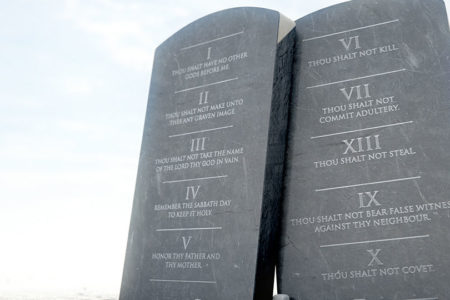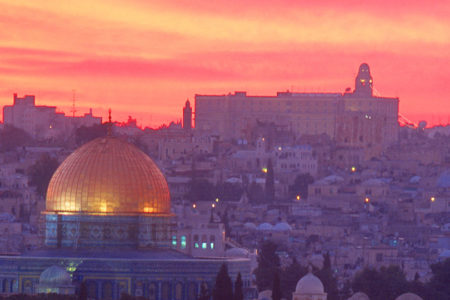Myths/Facts: Israel & the Middle East Sep/Oct 2005
MYTH: Israel’s plan to link Jerusalem and Ma’aleh Adumim is meant to sabotage the peace process.
FACT: In March 2005, Israel announced the intention to build 3,500 homes on a strip of territory that has been declared state land between the community of Ma’aleh Adumim and Jerusalem (Jerusalem Post, March 20, 2005). The decision immediately caused an uproar as Palestinian officials claimed it was “a kind of terror against the peace process and against the Palestinian people,” and Secretary of State Condoleezza Rice said it was at odds with U.S. policy (Jerusalem Post, March 28, 2005).
This is a good example of where it is important to understand not only the politics of the issue, but the geography.
Ma’aleh Adumim is a settlement in the West Bank. It is also a suburb of Israel’s capital, barely three miles outside the city limits, a ten-minute drive away. Ma’aleh Adumim is not a recently constructed outpost on a hilltop; it is a 23-year-old community that is popular because it is clean, safe, and close to where many residents work. It is also the largest Jewish settlement in the territories, with a population of 32,000.
Because of its size and location, it is understood by both Israelis and Palestinians that Ma’aleh Adumim will not be dismantled or evacuated; it will be part of Israel after a peace agreement is reached. That is why the recently announced housing plan was conceived during Prime Minister Yitzhak Rabin’s term. The development was part of his plan to link all of the large settlement blocs just outside Jerusalem’s city limits.
To understand why the plan has the support of Israel’s major parties, just look at a map. If Ma’aleh Adumim is not linked to Jerusalem, the city would be an island. We hear a lot about Palestinian concerns about the contiguity of a future Palestinian state, but the same principle applies to the future boundaries of Israel.
Why should it be a problem for Israel to fill in the empty gap between the city and this bedroom community? The corridor is approximately 3,250 acres and does not have any inhabitants, so no Palestinians will be displaced. And why shouldn’t Israel be able to build in and around the city that the U.S. Congress said “should be recognized as the capital of the State of Israel” and “should remain an undivided city”?
In his April 14, 2004, letter to Prime Minister Ariel Sharon, President Bush acknowledged that Israel would incorporate some settlements inside its borders.
In light of new realities on the ground, including already existing major Israeli population centers, it is unrealistic to expect that the outcome of final status negotiations will be a full and complete return to the armistice lines of 1949, and all previous efforts to negotiate a two-state solution have reached the same conclusion.
Given that Ma’aleh Adumim is the largest of these population centers, the decision to develop around the town seems consistent with the policy expressed in Bush’s letter. It is also consistent, incidentally, with the Clinton plan.
Would the completion of the building project known as E-1 prevent the creation of a contiguous Palestinian state? Again, a look at a map shows that it would not. The security fence is being built roughly along the Green Line and around the major settlement blocs, such as Ma’aleh Adumim, which are expected to be within the final negotiated borders of the state. The area of the West Bank beyond the fence is contiguous.
From Myths & Facts Online—A Guide to the Arab-Israeli Conflict by Mitchell G. Bard www. JewishVirtualLibrary.org.







